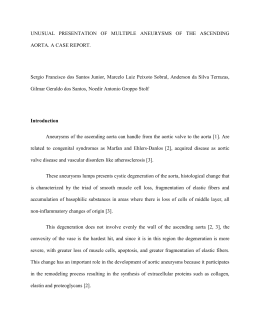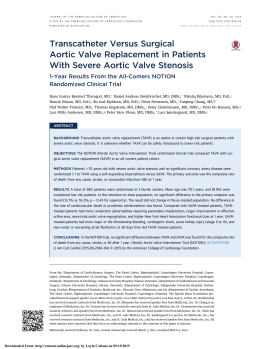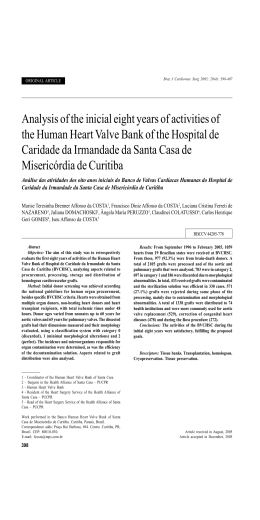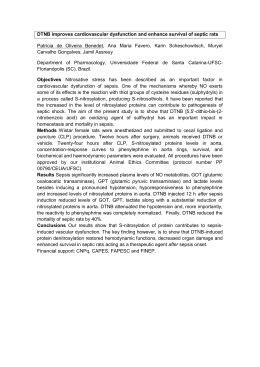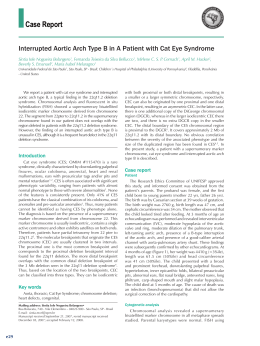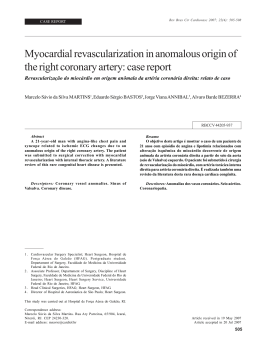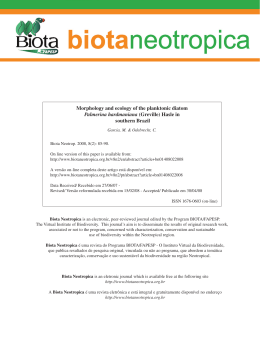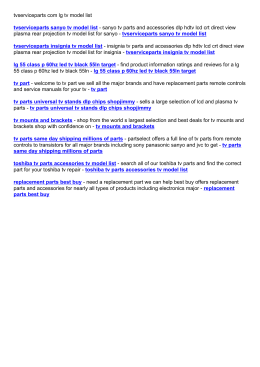ORIGINAL ARTICLE Rev Bras Cir Cardiovasc 2009; 24(2): 194-199 Reduction aortoplasty with external wrapping associated with aortic valve replacement in highrisk patients Aortoplastia redutora com contenção externa associada à troca valvar aórtica em pacientes de alto risco Rafael HADDAD1, Walter Vosgrau FAGUNDES2, Bruno Botelho PINHEIRO3 RBCCV 44205-1076 Abstract Objective: To assess the midterm follow-up of reduction aortoplasty with external wrapping associated with aortic valve replacement in high risk patients. Methods: Six patients with ascending aortic aneurysm and aortic valve disease were included in this study. Four of them were male. The age ranged from 61 to 70 years (mean 65.7 years). One patient presented severe mitral valve insufficiency. All patients underwent aortic valve replacement (83.3% with aortic insufficiency and 16.7% with aortic stenosis). The inclusion criteria were: surgical aortic valve disease, ascending aortic aneurysm > 5.5 cm, EuroSCORE > 6 and age above 60 years. The ascending aortic diameter ranged from 57 to 68 mm (mean 63.7 mm). Data were analyzed by paired T test for comparison between the studied variables and P < 0.05 was considered significant. Results: All patients underwent reduction aortoplasty with external wrapping associated with aortic valve replacement. The postoperative hospital mortality and morbidity was 0% and 16.7% (atrial fibrillation), respectively. The mean ascending aortic diameter was 37.0 + 4.5mm after 6 months of follow-up (P < 0.0001, compared with the preoperative period). The actuarial survival curve after 28 months of follow-up was 100%. Conclusion: Reduction ascending aortoplasty with 1. Associated Member of BSCVS; Cardiovascular Surgeon. 2. Specialist Member of the BSCVS; Responsible for the Cardiovascular Surgery Service of the Hospital Evangélico Goiano – Anápolis/GO. 3. Titular Member of BSCVS; Responsible for the Cardiovascular Surgery Service of the Hospital Evangélico Goiano – Anápolis/GO. external wrapping associated with aortic valve replacement is a safe procedure with excellent midterm results in high risk patients with ascending aortic aneurysm and aortic valve disease. Descriptors: Aortic aneurysm. Aorta/surgery. Aortic valve/ surgery. Resumo Objetivo: Avaliar a evolução de pacientes de alto risco submetidos a aortoplastia redutora com contenção externa associada a troca valvar aórtica. Métodos: Seis pacientes portadores de aneurisma de aorta ascendente e valvopatia aórtica, sendo quatro do sexo masculino, foram incluídos no estudo. Um paciente apresentava insuficiência mitral importante. A idade variou de 61 a 70 anos (média de 65,7 anos). A insuficiência aórtica foi a indicação de troca valvar em 83,3% dos pacientes e a estenose aórtica, em 16,7%. Os critérios de inclusão foram: pacientes portadores de valvopatia aórtica com indicação cirúrgica, aorta ascendente com diâmetro > 5,5 cm, EuroSCORE > 6 e idade acima de 60 anos. O diâmetro da aorta ascendente variou de 57 a 68 mm (média de 63,7 mm). Análise estatística foi realizada utilizando o teste t pareado para as variáveis estudadas, com nível de significância menor que 5%. This study was carried out at the Clinicord – Goiânia, GO, Brazil. Correspondence address: Rafael Haddad Rua Siriema, Qd 147 Lt 21 - Setor Santa Genoveva – Goiânia, GO, Brazil – CEP 74670-800. E-mail: [email protected] Article received on October 14th, 2008 Article accepted on March 24th 2009 194 HADDAD, R ET AL - Reduction aortoplasty with external wrapping associated with aortic valve replacement in high-risk patients Rev Bras Cir Cardiovasc 2009; 24(2): 194-199 Resultados: Todos os pacientes foram submetidos a aortoplastia redutora com contenção externa associada a troca valvar aórtica. Não houve mortalidade hospitalar na série estudada. Um (16,7%) paciente apresentou fibrilação atrial no pós-operatório. O diâmetro médio da aorta ascendente foi de 37,0 +4,5 mm aos 6 meses de pós-operatório (P < 0,0001, em relação ao pré-operatório). A curva atuarial de sobrevivência é de 100% ao final de 28 meses de seguimento. Conclusões: A aortoplastia redutora associada a contenção externa e troca valvar aórtica é uma opção terapêutica com resultados promissores a médio prazo, em pacientes de alto risco cirúrgico portadores de aneurisma de aorta ascendente e valvopatia aórtica. INTRODUCTION The aneurysms of the ascending aorta (AscAA) with diameter between 5 cm to 6 cm present annual rate of rupture and major adverse events (rupture, dissection, death) of 6.5% and 14% respectively [1]. In 5% to 15% of the patients undergoing aortic valve replacement there is the need for concomitant approach of the ascending aorta [2]. Different surgical techniques are used in the treatment of AscAA. The choice of the most appropriate technique requires careful consideration of several factors, including aneurysm morphology, presence of dilation of the annulus and sinus of Valsalva, associated aortic valve disease and surgical risks [3]. When the dilation involves only the ascending aorta, its replacement using Dacron prosthesis is the procedure most often used [4]. Although providing good results [5], it has a significant risk of postoperative morbidity and mortality reaching up to 10% [1,6-8]. The reduction aortoplasty (RA) is an alternative technique for the replacement of the ascending aorta in patients with AscAA without dilation of aortic root [9], presenting several advantages such as: procedure less aggressive than the aortic replacement using Dacron prosthesis, less time of myocardial ischemia and reduced postoperative bleeding. In addition, lower rates of morbidity and mortality have been reported with its use when compared to other procedures [10,11]. However, due to the considerable frequency of re-dilatation of the ascending aorta, the use of RA is considered a controversial procedure, generally used in high-risk surgical patients who need a short time of aortic clamping [12]. The tendency of aortic dilation is related to the intrinsic failure of the vascular wall. The reductive aortoplasty eliminates the aneurysm but it does not prevent its recurrence without an external wrapping, which can be performed with Dacron, nylon or bovine pericardium. The use of two techniques has been preconized by some authors, because such techniques provide reduction of the stress (Laplace’s law) and strengthening of the aortic wall [10.13]. The aim of our study is to assess the evolution of high- Descritores: Aneurisma aórtico. Aorta/cirurgia. Valva aórtica/cirurgia. risk patients undergoing reduction aortoplasty associated with the external wrapping associated with aortic valve replacement. METHODS From October 2005 to September 2007, 6 patients with ascending aortic aneurysm and aortic valve disease, who had undergone reduction aortoplasty with external wrapping associated with the aortic valve replacement were included in this study. One patient presented mitral valve disease associated with indication for surgical repair. Their clinical characteristics are presented in Table 1. Table 1. Patient’s epidemiological data. Clinical variables Gender Male Female Age Mean Data 66.7% 33.3% 61 to 70 years 65.7 years Symptoms Thoracic pain SAH COPD Extracardiac arteriopathy Stroke Smoking CRI 100% 100% 100% 66.7% 33.3% 16.7% 66.7% 13.3% Ethiopatogeny Ascending aorta ≥ 5.5 cm Severe aortic insufficiency Severe aortic stenosis Severe mitral insufficiency 100% 83.3% 16.7% 16.7% SAH – Systemic arterial hypertension; COPD – Chronic obstructive pulmonary disease; CRI – Chronic renal insufficiency 195 HADDAD, R ET AL - Reduction aortoplasty with external wrapping associated with aortic valve replacement in high-risk patients Rev Bras Cir Cardiovasc 2009; 24(2): 194-199 Table 2. Preoperative echocardiogram. The study protocol was approved by the Ethics Committee of the Santa Ascending aorta Sinotubular junction LVEDD LVESD EF Patients Genoveva Hospital (HSG-GO 200/05) and diameter (mm) diameter (mm) (mm) (mm) (%) all patients signed written informed 65 36 78 38 78 1 consent advising about the treatment and 66 36 68 43 65 2 the need for periodic reviews. 68 38 80 50 55 3 The diagnosis and assessment of the 66 37 68 49 38 4 anatomical characteristics of the aortas 57 36 60 45 49 5 of these patients were performed from the 60 38 58 40 45 6 echocardiographic, tomographic and 63.7 36.8 68.7 44.2 55.0 Mean cineangiographic study. In the 4.2 1.0 9.0 4.8 14.5 Standard Deviation echocardiographic study, the mean LVEDD - Left ventricular end-diastolic diameter; LVESD=left ventricular end-systolic diameter of the ascending aorta and diameter; EF – Ejection fraction; mm – millimeter sinotubular junction was 63.7 + 4.2 mm and 36.8 + 1.0 mm, respectively (Table 2). To evaluate the surgical risk score, the EuroSCORE was the aortic clamping, aortic external reinforcement using used [14] (Table 3). Nylon® mesh was performed, in the “butterfly wings” shape The inclusion criteria were: patients with aortic valve to avoid distortion of the left coronary ostium (Figure 1). disease with surgical indication, ascending aortic diameter The mesh was positioned with its smallest diameter in the > 5.5 cm, EuroSCORE > 6 and age over 60 years. The posterior portion of the ascending aorta and, after covered exclusion criteria were: presence of dissections of the it completely, continuous suture with prolene 4.0 ascending aorta, Marfan syndrome and no written informed (mechanical wrapping) was performed on it. Additional consent signed by the patients. fixation with four separate points using 4.0 prolene yarn on the aortic adventitia was performed in order to avoid the Table 3. Surgical risk assessment by using the EuroSCORE. displacement of the mesh. Patients 1 2 3 4 5 6 Logistic Euro SCORE 31,2% 25,7% 84,4% 79,5% 52,1% 66,4% Standard Euro SCORE 12 11 19 18 14 16 Surgical technique Conventional median sternotomy was used in all patients. Cardiopulmonary bypass was established with arterial cannulation of the ascending aorta near the brachiocephalic trunk and venous cannulation in the right atrium, except in the patient who underwent concomitant mitral valve replacement, on which cannulation of inferior and superior vena cava was used. Myocardial protection was achieved by use of moderate systemic hypothermia (28°C) and hypothermic antegrade blood cardioplegia directly in the coronary ostia. Longitudinal aortotomy was performed with resection in diamond shapes of the ascending aorta of approximately 10 mm wide in its largest portion, replacement of the aortic valve and aortic suture through double-running suture using 4.0 Prolene yearn. In one patient concomitant mitral valve replacement was performed through the classical access route (longitudinal left atriotomy). After removal of 196 Fig. 1 – Surgical picture. A: Ascending aortic aneurysm in patient with aortic valve insufficiency. B: Reduction aortoplasty with external wrapping using nylon mesh HADDAD, R ET AL - Reduction aortoplasty with external wrapping associated with aortic valve replacement in high-risk patients Statistical analysis Rev Bras Cir Cardiovasc 2009; 24(2): 194-199 Table 4. Postoperative echocardiogram. Ascending aorta diameter (mm) 40 1 41 2 40 3 38 4 30 5 33 6 37.0* Mean 4.5 Standard deviation Patients Statistical analysis was performed using the paired ttest for the variables studied. The results were expressed as mean ± standard deviation and considered at the significance level less than 5% (P <0.05). We used the software for statistical analysis StatsDirect version 2.6.5. RESULTS The time of cardiopulmonary bypass and aortic clamping ranged from 70 min to 108 min (mean 83.2 min) and 33 min to 92 min (mean 51.8 min), respectively. In all patients reduction aortoplasty with external wrapping was performed (Nylon® mesh) associated with aortic valve replacement. Two patients received aortic double-leaflet mechanical prosthesis (St. Jude Medical, Inc., Minneapolis, USA) with diameters of 25 mm and 27 mm. In three patients porcine bioprostheses of 27 mm in diameter in aortic position were implanted (SJM Biocor, Belo Horizonte, Brazil); in one patient of 29 mm and in another patient valve replacemente was associated by using a 31-mm porcine bioprosthesis. The length of stay in intensive care unit (ICU) and hospital stay ranged from 36 to 78 h (mean 48.8 h) and 6 to 7 days (mean 6.6 days), respectively. The postoperative bleeding was from 200 to 550 ml (mean 326.6 ml) and the use of blood derivative from 0 to 3 units of concentrated red blood cells (average of 1.2 u/pac). There was no hospital mortality in the series studied. One patient presented persistent atrial fibrillation in the postoperative period (16.7% of morbidity), which was reversed after 5 months from the intervention. Echocardiographic evaluation performed 6 months after surgery showed significant reduction in the mean diameter of the ascending aorta (37.0 + 4.5 mm) in relation to the preoperative period (P <0.0001) (Table 4). The end diastolic and systolic diameters of the left ventricle showed a significant reduction (P = 0.004 and P = 0.003, respectively). The mean ejection fraction had improved (61.8 + 9.2%) compared to preoperative period, however without statistical significance (P = 0.06). The actuarial survival curve was 100% at the end of 28 months of follow-up (Figure 2). DISCUSSION The reduction aortoplasty (RA) is an alternative technique for the replacement of the ascending aorta in patients with AscAA without dilation of aortic root [9]. Usually, such procedure is indicated in elderly patients with high peroperative risk [15] and with need for reduction of time in myocardial ischemia [2.12]. There is consensus that the RA should not be used in patients with type A aortic LVEDD (mm) 50 55 60 41 56 41 50.5* 8.0 LVESD (mm) 28 37 46 33 33 33 35.0* 6.1 EF (%) 76 65 60 48 64 58 61.8 9.2 LVEDD - Left ventricular end-diastolic diameter; LVESD=left ventricular end-systolic diameter; EF – Ejection fraction; mm – millimeter. *P < 0.05; in relation to the preoperative period Fig. 2 – Actuarial survival curve at 28 months of follow-up. dissection , Marfan’s syndrome and cystic medial necrosis [8,15,16]. The rate of postoperative complications is reduced with the use of reduction aortoplasty, especially with regard to acute myocardial infarction, stroke and re-exploration due to bleeding [2]. Hospital mortality is low (1.5%) [15], when compared to ascending aortic replacement (2.5% to 9.5%) [1,6]. Polvani et al. [15] reported survival of 89.3% of patients who had undergone RA after 6 years of follow-up, with 95.7% of them free of death from cardiovascular causes. Also, Feindt et al. [16] achieved in 13 patients who had undergone this technique, 100% of success after 6 years. These results are consistent with other reports in the literature [10-12]. In our series there was no hospital or late mortality, with a survival of 100% of patients. Only one (16.7%) patient died in the postoperative due to persistent atrial fibrillation. The tendency of aortic dilation is related to the intrinsic failure of the vascular wall [13]. The reduction aortoplasty eliminates the aneurysm but it does not prevent its 197 HADDAD, R ET AL - Reduction aortoplasty with external wrapping associated with aortic valve replacement in high-risk patients Rev Bras Cir Cardiovasc 2009; 24(2): 194-199 recurrence without an external wrapping. The combination of two techniques produces reduction of stress Laplace’s law) and strengthening of the aortic wall [13]. However, other authors question the need of external wrapping, including report of adverse effects, such as erosion [17] and degeneration of the arterial wall [18]. Extensive degeneration of the aortic wall was showed in two patients reoperated by Neri et al. [18], due to the development of late pseudoaneurysm after reduction aortoplasty with external wrapping. The interruption of nutrition of the vasa vasorum from the tunica media of the aorta, the chronic inflammatory response to the presence of foreign body or simply the compression of the aortic wall by opposing forces (external wrapping and aortic pressure) could interfere with the metabolism of the aortic wall and lead to atrophy and sclerosis [18]. Such complications would be avoided by appropriate positioning and anchoring of the prosthesis, by avoiding the formation of bendings in the aortic wall, which resulted in areas of high mechanical stress [17]. The rate of re-dilation of the ascending aorta after RA varies from 0% to 25% [10-12,19]. These conflicting results seem to be arising from the absence of external wrapping, but the comparison of the aforementioned studies is hampered by the lack of homogeneity between groups. In this study we chose the use of external wrapping in all patients. In echocardiographic evaluation 6 months after the procedure re-dilation of the treated aorta was not observed. There is a tendency in not indicating RA for patients with AscAA with diameter greater than 60 mm [8]. Polvani et al. [15] and Kamada et al. [19] suggest that the diameter of 55 mm should be considered as limit of indication for the procedure. However, Feindt et al. [16] reported good results in patients up to 65 mm diameter, who had no dilation of the sinotubular junction and the aortic arch. In this research we included patients with a diameter from 57 mm to 68 mm (mean 63.7 mm), even knowing the potential risk of late redilation since such patients had high surgical risk for ascending aortic replacement (EuroSCORE 11 to 19 ). However, we did not find this complication in the mid-term evolution of the group studied. The association of aortic valve replacement and RA is very common, with reports in the literature ranging from 35.5% to 94.8% [10,11,15]. In the study by Polvani et al. [15], aortic valve insufficiency was the mean associated valve disease. In our study, all patients underwent aortic valve replacement, and the most prevalent etiopathology was the insufficiency (83.3%). Respecting the limitations of our study (small sample of patients, mid-term follow-up, selected and not randomly population), we can infer that the reduction aortoplasty associated with external wrapping and aortic valve replacement is a therapeutic option with promising midterm results, in high surgical risk patients with ascending aortic aneurysm and aortic valve disease. 198 REFERENCES 1. Elefteriades JA. Natural history of thoracic aortic aneurysms: indications for surgery, and surgical versus nonsurgical risks. Ann Thorac Surg. 2002;74(5):S1877-80. 2. Carrel T, von Segesser L, Jenni R, Gallino A, Egloff L, Bauer E, et al. Dealing with dilated ascending aorta during aortic valve replacement: advantages of conservative surgical approach. Eur J Cardiothorac Surg. 1991;5(3):137-43. 3. Ergin MA, Spielvogel D, Apaydin A, Lansman SL, McCullough JN, Galla JD, et al. Surgical treatment of the dilated ascending aorta: when and how? Ann Thorac Surg. 1999;67(6):1834-9. 4. Hagl C, Strauch JT, Spielvogel D, Galla JD, Lansman SL, Squitieri R, et al. Is the Bentall procedure for ascending aorta or aortic valve replacement the best approach for long-term event-free survival? Ann Thorac Surg. 2003;76(3):698-703. 5. De Paulis R, Cetrano E, Moscarelli M, Andò G, Bertoldo F, Scaffa R, et al. Effects of ascending aorta replacement on aortic root dilatation. Eur J Cardiothorac Surg. 2005;27(1):86-9. 6. Immer FF, Barmettler H, Berdat PA, Immer-Bansi AS, Englberger L, Krähenbühl ES, et al. Effects of deep hypothermic circulatory arrest on outcome after resection of ascending aortic aneurysm. Ann Thorac Surg. 2002;74(2):422-5. 7. Jault F, Nataf P, Rama A, Fontanel M, Vaissier E, Pavie A, et al. Chronic disease of the ascending aorta. Surgical treatment and long-term results. J Thorac Cardiovasc Surg. 1994;108(4):747-54. 8. Robicsek F, Cook JW, Reames MK Sr, Skipper ER. Size reduction ascending aortoplasty: is it dead or alive? J Thorac Cardiovasc Surg. 2004;128(4):562-70. 9. Robicsek F. A new method to treat fusiform aneurysms of the ascending aorta associated with aortic valve disease: an alternative to radical resection. Ann Thorac Surg. 1982;34(1):92-4. HADDAD, R ET AL - Reduction aortoplasty with external wrapping associated with aortic valve replacement in high-risk patients Rev Bras Cir Cardiovasc 2009; 24(2): 194-199 10. Arsan S, Akgun S, Kurtoglu N, Yildirim T, Tekinsoy B. Reduction aortoplasty and external wrapping for moderately sized tubular ascending aortic aneurysm with concomitant operations Ann Thorac Surg. 2004;78(3):858-61. 15. Polvani G, Barili F, Dainese L, Topkara VK, Cheema FH, Penza E, et al. Reduction ascending aortoplasty: midterm follow-up and predictors of redilatation. Ann Thorac Surg. 2006;82(2):586-91. 11. Bauer M, Pasic M, Schaffarzyk R, Siniawski H, Knollmann F, Meyer R, et al. Reduction aortoplasty for dilatation of the ascending aorta in patients with bicuspid aortic valve. Ann Thorac Surg. 2002;73(3):720-3. 16. Feindt P, Litmathe J, Börgens A, Boeken U, Kurt M, Gams E. Is size-reducing ascending aortoplasty with external reinforcement an option in modern aortic surgery? Eur J Cardiothorac Surg. 2007;31(4):614-7. 12. Mueller XM, Tevaearai HT, Genton CY, Hurni M, Ruchat P, Fischer AP, et al. Drawback of aortoplasty for aneurysm of the ascending aorta associated with aortic valve disease. Ann Thorac Surg. 1997;63(3):762-6. 17. Bauer M, Grauhan O, Hetzer R. Dislocated wrap after previous reduction aortoplasty causes erosion of the ascending aorta. Ann Thorac Surg. 2003;75(2):583-4. 13. Robicsek F. Invited Commentary: Tailoring aortoplasty for repair of fusiform ascending aortic aneurysms. Ann Thorac Surg. 1995;59(2):501. 18. Neri E, Massetti M, Tanganelli P, Capannini G, Carone E, Tripodi A, et al. Is it only a mechanical matter? Histologic modifications of the aorta underlying external banding. J Thorac Cardiovasc Surg. 1999;118(6):1116-8. 14. Nashef SA, Roques F, Michel P, Gauducheau E, Lemeshow S, Salamon R. European system for cardiac operative risk evaluation (EuroSCORE). Eur J Cardiothorac Surg. 1999;16(1):9-13. 19. Kamada T, Imanaka K, Ohuchi H, Asano H, Tanabe H, Kato M, et al. Mid-term results of aortoplasty for dilated ascending aorta associated with aortic valve disease. Ann Thorac Cardiovasc Surg. 2003;9(4):253-6. 199
Download
